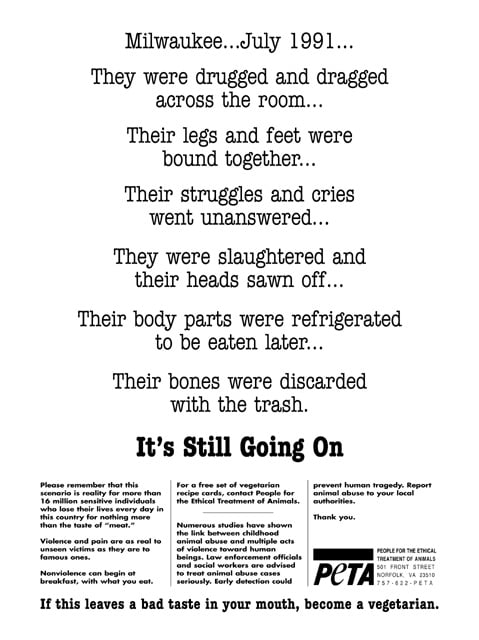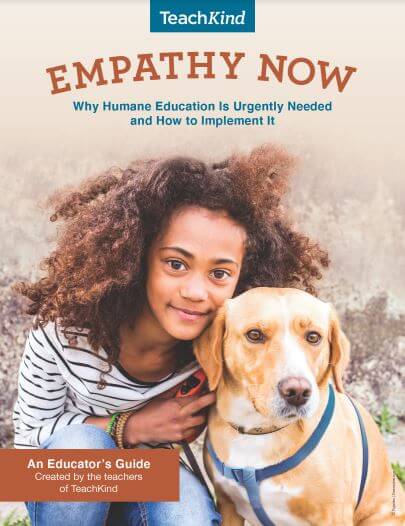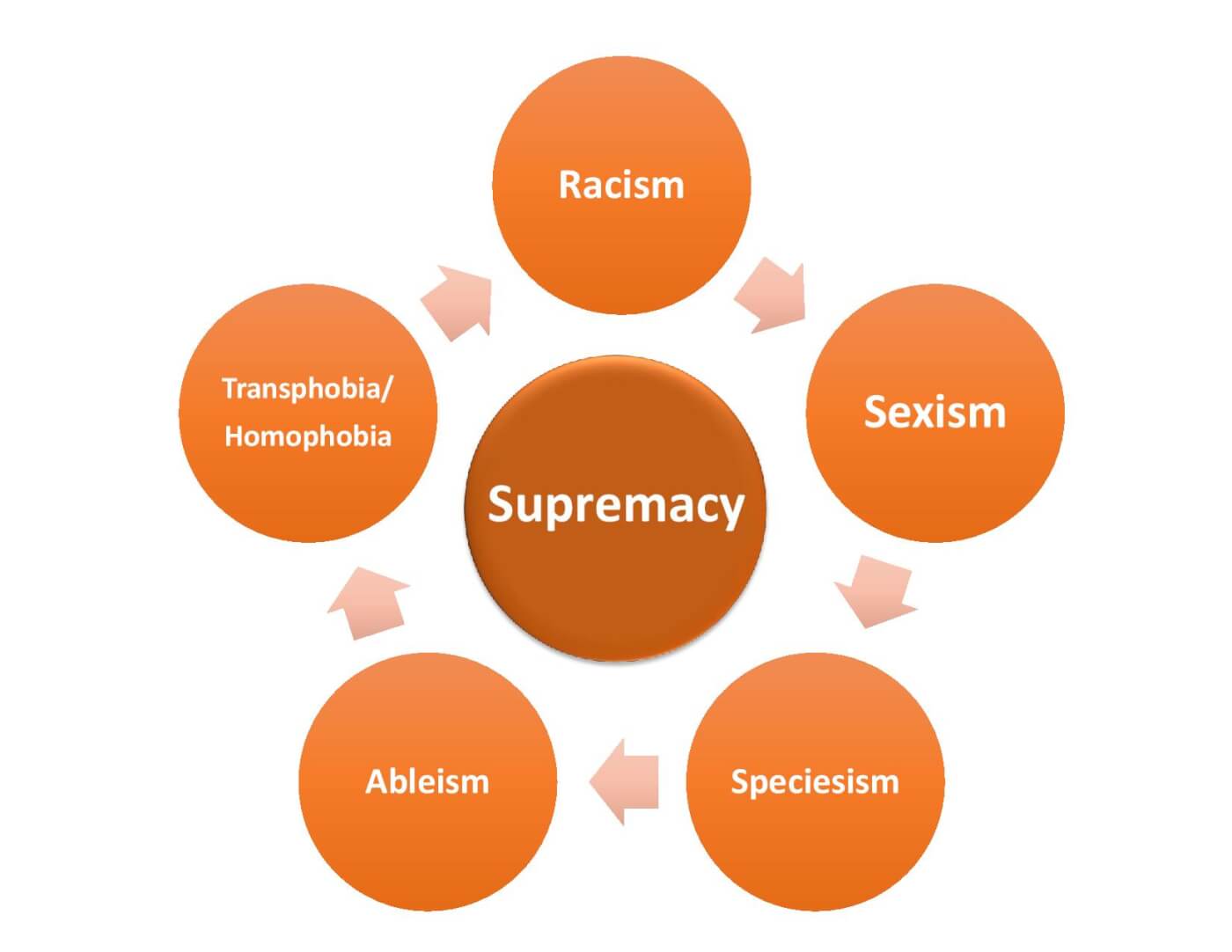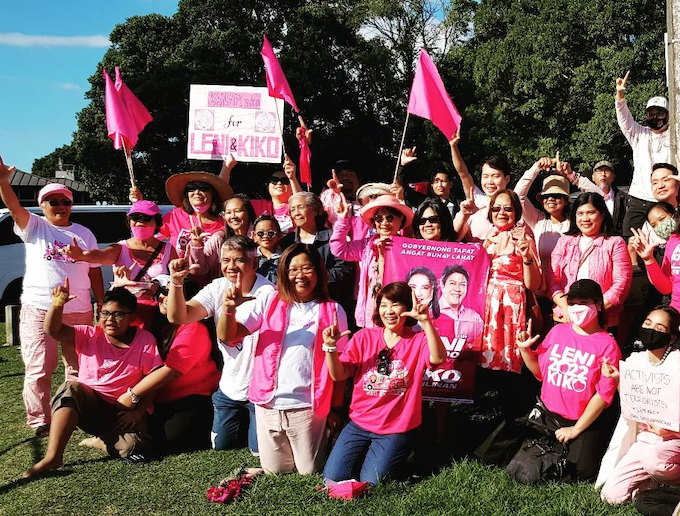A potentially historic political shift is currently taking place within an unexpected group of Americans: evangelical Christians. In the wake of Donald Trump’s presidency, strains within the evangelical community, especially among people of color, have resulted in significant numbers of people defecting from the right and opening themselves to social justice stances on issues of race, immigration, climate and economic fairness. Should the trend escalate, it could send tremors that extend well beyond the religious community and reverberate throughout U.S. politics.
While the future of evangelical politics remains uncertain, the divisions forming in religious spaces are creating significant opportunities for those interested in promoting progressive change. Moreover, organizing among evangelical dissenters is providing important lessons in how those working on social justice issues might find fertile ground in communities outside their circles of usual suspects — provided they can relate with people who do not identify as belonging on either side of the traditional divide between the political right and left.
Due to the various ways in which the term “evangelical” is defined, it is difficult to put an exact percentage on the number of evangelical Christians in America today. A 2016 survey by Wheaton College, a private religious university, estimated about 90 to 100 million people in the United States are evangelical. Today, it is generally taken for granted that this constituency is one of the most rock-solid pillars of the Republican coalition — and there is good reason to see things this way: In 2016, 80 percent of white evangelicals supported Donald Trump, with two-thirds of self-identified evangelicals saying their faith influences their political beliefs.
Such far-right identification, however, has not been forever locked in place. As recently as the early 1970s, evangelicals were considered a largely apolitical group. To the extent they formed a voting bloc, they were considered divided and persuadable — a constituency that could be won over by Democratic politicians such as Jimmy Carter. Indeed, since Carter was himself a born-again Christian, Newsweek magazine dubbed 1976, the year of his election, the “Year of the Evangelical.”
A concerted campaign by conservative groups such as the Moral Majority, the Christian Coalition and Focus on the Family made certain that future mentions of evangelicals in politics would definitely not refer to Democratic presidential wins. In social movement terms, the decades-long project by the “New Right” to transform the evangelical community from a muddled and sometimes apathetic bloc into one of the most die-hard conservative demographics represents an unprecedented organizing accomplishment.
While conservatives have provided a textbook example of how a constituency can be polarized in order to strengthen allegiances and move indecisive moderates into a political camp, the continuing polarization that occurred under Trump began creating a backlash. On the one hand, Trump was a master at energizing religious conservatives and solidifying their identification with him. Analysis from the Pew Research Center suggests even some non-churchgoing white conservatives are now adopting the “evangelical” label — not to show religious identity, but to express a political orientation and demonstrate support for the party of Trump.
On the other hand, a predictable consequence of polarization is that, even as many supporters grow more passionately partisan, others will start to become alienated. When forcing people to take sides, you may draw many into your fold; however, you risk losing a fraction who are turned off and unwilling to make the leap. Signs of such a backlash can currently be seen among evangelicals — particularly people of color.
No one would argue that the right has lost its command over the evangelicals as a whole, as white evangelicals remain among the most fervent supporters of former President Trump. At the same time, the reaction of evangelical leaders to mass protests around racial injustice, COVID, and #MeToo — along with sexual impropriety and scandals in many churches — have started driving people away in significant numbers. In some cases, those who are leaving are now looking for new expressions of their faith that are aligned with social justice — expressions that sometimes put them squarely at odds with white evangelical Trump supporters.
Even if only a limited fraction of evangelicals are moved to embrace more progressive stances, the impact on the electorate as a whole could be profound. For this reason, understanding the divisions that are forming — and analyzing the opportunities they present — is a pressing task.
A Splintering Evangelical Coalition?
In recent years there have been many news stories about how the ardent right-wing identification of the evangelical community has begun to produce increasing numbers of defectors. Primarily, this has been reported in terms of people leaving their churches.
The percentage of Americans who identify as Christian (once well over 90 percent of the population) has steadily fallen since the 1960s, with the decline accelerating in the past 10 years. Among the subset of people who identify as white evangelicals, the drop-off has been particularly marked. According to the Public Religion Research Institute, “23 percent of Americans were white evangelical Protestants in 2006; by 2020, that number had decreased to just 14.5 percent.” Some part of this trend can be attributed to a general waning of public religiosity, as an increasing portion of the population checks “none” on surveys when asked about religious affiliation.
But it would be wrong to underestimate the connection between evangelicals’ diminished share of the population and disaffection with the conservative extremism that pervades many congregations. Following Trump’s election in 2016, the #Exvangelical hashtag became increasingly popular, as many white evangelicals deserted their churches, citing Trumpism among faith leaders and their hard-right political platform as a primary concern.
This exodus from evangelicalism has been highlighted by the exits of prominent individuals within the movement. One such figure was Peter Wehner, a political operative who served in three Republican administrations. In a popular op-ed for the New York Times titled “Why I Can No Longer Call Myself an Evangelical Republican,” Wehner wrote about no longer feeling comfortable with the designation “evangelical” after witnessing continued support among fellow conservative Christians for Roy Moore, a former Alabama Supreme Court Justice and Republican nominee in a 2017 U.S. Senate race who was accused of sexual misconduct by nine women.
In a similar move, Bible teacher and conservative Christian Beth Moore (no relation to Roy Moore) left the Southern Baptist Convention, or SBC. She cited, among other issues, the failure of her church to condemn Trump’s “Access Hollywood” tape. Meanwhile, the shifting political climate has also riven institutions such as World Magazine, a prominent Christian news organization, which lost editor-in-chief Martin Olasky and several journalists who protested that the publication was becoming less a respected news source and more a conservative opinion outlet.
Such developments are symptomatic of a larger splintering within the evangelical church, in which many are questioning whether or not they ideologically belong in the community they once considered home. They are witnessing increasing divisions not only over Trump, but more generally over issues such as sexuality, #MeToo and the public response to the COVID pandemic. High-profile scandals have further exacerbated tensions and spurred the departure of many parishioners. Megachurches from Seattle to Illinois to Alabama and beyond have witnessed resignations from well-known pastors after allegations of sexual misconduct or infidelity — and investigations such as the major report on sexual abuse in the SBC released in May 2022 have documented the endemic mishandling of sexual abuse claims.
In a February 2022 article for the Christian magazine First Things, Evangelical writer Aaron Renn argued: “Where once there was a culture war between Christianity and secular society, today there is a culture war within evangelicalism itself.” Not only prominent leaders, but rank-and-file pastors are departing in significant numbers. According to a 2021 poll by the Christian polling firm Barna Group, 38 percent of pastors said they had considered quitting full-time ministry. Scott Dudley, a pastor at Bellevue Presbyterian Church, told The Atlantic that many pastors have not only left their churches, but are deciding to pursue entirely different careers. “They have concluded that their church has become a hostile work environment where at any moment they may be blasted, slandered, and demeaned in disrespectful and angry ways,” Dudley said, “or have organized groups of people within the church demand that they be fired.”
In a widely circulated February 2022 opinion piece for the New York Times, columnist and author David Brooks examined this tension within the evangelical community. “The turmoil in evangelicalism has not just ruptured relationships; it’s dissolving the structures of many evangelical institutions,” he wrote. “Many families, churches, parachurch organizations and even denominations are coming apart. I asked many evangelical leaders who are wary of Trump if they thought their movement would fracture. Most said it already has.”
Fracturing Along Racial Lines
Perhaps as much as any other issue, the question of race has created schisms within evangelical communities. In his article, Brooks cited “attitudes about race relations” as one of the primary factors that has driven Christian evangelicals apart. “It’s been at times agonizing and bewildering,” Thabiti Anyabwile, who pastors the largely Black Anacostia River Church in Washington, D.C, told Brooks. “My entire relationship landscape has been rearranged. I’ve lost 20-year friendships. I’ve had great distance inserted into relationships that were once close and I thought would be close for life. I’ve grieved.”
In an April 2017 special report for Religion Dispatches titled “Betrayed at the Polls, Evangelicals of Color at a Crossroads,” reporter Deborah Jian Lee profiled several women of color who left their churches after the Trump election. Alicia Crosby, who is a Black social justice advocate, felt betrayed by white evangelical support for Trump and left her church to found the Center for Inclusivity. Crosby has spoken out on numerous podcasts about her experience leaving the evangelical church and finding Christian community elsewhere. In 2019, she wrote: “In this moment, it’s not enough to ask how Christians can be more justice-minded, it is necessary to ask them to consider how their tradition and lived out faith practices are complicit in creating conditions for harm, regardless of what shapes their personal moral code.”
Chanequa Walker-Barnes, a professor of practical theology at the McAfee School of Theology at Mercer University in Atlanta, left the majority-white church where she had been on staff. “People of color [have been] willing to fit themselves into these white evangelical spaces even when it was uncomfortable,” she told Religion Dispatches. But for her and many colleagues, the dissonance became too extreme: “One friend said the [2016] election was the ‘final nail in the coffin of my relationship with the evangelical church,’” Walker-Barnes explained. “I don’t know if I’m doing a full divestment from evangelical spaces, but I’m definitely pulling back.”
Racial tensions are not new, of course. That said, a March 2018 article by New York Times reporter Campbell Robertson highlighted how the right-wing polarization of the past decade has undone initiatives to create multi-racial church communities. A 2012 National Congregational Study showed that two-thirds of those attending majority-white churches were worshiping alongside “at least some Black congregants,” an increased level of church integration since 1998.
However, after the 2016 election, when white evangelicals supported Trump “by a larger margin than they had voted for any other presidential candidate,” churches began to resegregate, reversing previous efforts. Speaking about Trump’s open hostility towards people of color and immigrants, Walker-Barnes told Robertson, “[S]omething is profoundly wrong at the heart of the white church.”
“Everything we tried is not working,” added author Michael Emerson. “The election itself was the single most harmful event to the whole movement of reconciliation in at least the past 30 years,” he said. “It’s about to completely break apart.”
Subsequently, the murder of George Floyd in May 2020 and a renewed wave of Black Lives Matter protests further heightened tensions. At a time of national reckoning, many evangelicals of color no longer felt that their congregations adequately supported them or reflected their values. Two prominent Black evangelicals, Chicago pastor Charlie Dates and Atlanta’s John Onwucheckwa both left the SBC due to concerns about racism within the organization. For Dates, the “final straw” was when all six SBC seminary presidents issued a statement in November 2020 that rejected critical race theory, calling it “incompatible with the Baptist Faith and Message” and “not a biblical solution.”
In a December 2020 opinion piece for Religion News Service, Dates asked: “How did they, who in 2020 still don’t have a single Black denominational entity head, reject once and for all a theory that helps to frame the real race problems we face?” Dates calls for a “new vision and new standard,” one which will not be “led in full by white men” and which “speaks justice courageously to the government and cares gently for the oppressed, marginalized and women.” A little over a year after Dates’ public exit, in February 2022, the SBC appointed Tennessee Baptist pastor Willie McLaurin as interim president and CEO of the SBC Executive Committee; McLaurin is the first and the sole Black person to assume an Executive Committee role.
For his part, Onwuchekwa named four reasons for leaving the SBC, including the “destructive nature of a disremembered history” (the SBC failing to address the ways the organization participated in slavery), “racial repair” (the denomination has not denounced racism), “unhealthy partisanship” (allegiance to the Republican Party), and “shallow solutions where they should be putting on scuba gear” (a focus on unity rather than structural solutions to racial injustice). “The SBC liked me,” Onwuchekwa wrote in his public goodbye letter, “but I feel like they’ve failed people like me. I’d rather give myself to serving that overlooked and under-resourced demographic than merely enjoy the perks of being treated as some outlier.”
A Mixed Evangelical Politics
Although there are signs that new political possibilities may emerge within evangelical spaces that have experienced polarization and division, there is no widespread agreement about what form these may take — and how radically they might break with the orthodoxy of the religious right.
Some dissenters, while perhaps falling in the “Never Trump” camp, remain hardline conservatives, simply wanting a more sedate, family-values Republicanism. As Rachel Stone, a lifelong evangelical and former evangelical writer, wrote in response to the David Brooks article, “Mr. Brooks’s alleged ‘dissenters’ depart from evangelical orthodoxy by not bowing to Donald Trump; otherwise, they’re typical evangelical gatekeepers.” As an example, Stone noted that one of the “Never Trumpers” cited by Brooks, Christian professor Karen Swallow Prior, supports highly restrictive abortion legislation, among other conservative public policies. Other evangelicals want to make their churches less political, but not necessarily more progressive, putting forward calls for unity that attempt to paper over existing strains.
In June 2021, Michael Graham, who regularly communicates with evangelical pastors around the country, created a typology to explain these changes within the evangelical community. In an article titled “The Six Way Fracturing of Evangelicalism,” Graham divided the community into a half dozen distinct groups. He sees three groups (the “Post-Evangelical,” the “Dechurched, but with some Jesus” and “Dechurched and Deconverted”) as having cut ties with the faith. Among those who have remained, he sees three further factions: “Neo-fundamentalist evangelicals” (who have a strictly orthodox worldview), “Mainstream evangelicals” (who may show concern for “the destructive pull of Christian Nationalism” but are “far more concerned by the secular left’s influence”), and finally “Neo-evangelicals” (who are “highly concerned” by the acceptance of Trump and failure to engage on issues of race and sexuality within the evangelical community). Of these, only the last group would truly represent potential for political realignment.
Nevertheless, Graham sees major changes afoot. He questions whether “big tent evangelicalism” will survive, given the highly visible and even “fatal” divides between fundamentalists and neo-evangelicals. He believes new models of churches will emerge — and are already emerging — to offer compromises to those who fall between categories, or who are still deciding where they belong. “We will see a rising tide of justice-minded churches,” he writes, which is likely to draw in those who are turned off by the right and have interest in the social gospel.
The values and experiences of a younger generation are also driving change. Mark Labberton, the president of Fuller Seminary, says that some younger members of the church “want to build communities that are smaller, intimate, authentic, which can often fit in a living room. They see faith as inseparably linked to community service with the poor and marginalized. There’s a general interest in getting away from all the bitterness that has devoured the elders and just diving back into the Bible.”
Likewise, as Cylde Haberman reported in the New York Times, “A younger cohort of evangelical Protestants is increasingly Black and Latino. Ethnicity aside, they resemble other young Americans in not automatically sharing their elders’ hostility to same-sex marriage, abortion, or gay and transgender rights.” David Bailey, a Black evangelical in Virginia whose own church is “racially and socioeconomically diverse” told David Brooks he sees that “Christians who are millennials and younger have different views on things like LGBTQ issues and are just used to mixing with much more diverse demographics.”
Tim Keller, the founding pastor of Redeemer Presbyterian Church in New York City and a leading evangelical thinker, sees a younger evangelicalism rising with a politics that cannot be easily characterized as right or left. “The enormous energy of [evangelical] churches in the global South and East has begun to spill over into the cities of North America, where a new, multiethnic evangelicalism is growing steadily,” he wrote in a 2017 New Yorker article. “In my view, these churches tend to be much more committed to racial justice and care for the poor than is commonly seen in white Evangelicalism. In this way, they might be called liberal. On the other hand, these multicultural churches remain avowedly conservative on issues like sex outside of marriage. They look, to most eyes, like a strange mixture of liberal and conservative viewpoints, although they themselves see a strong inner consistency between these views.”
Toward Mission-Centered Racial Justice
The vehemence of support for Trump’s white nationalism in many evangelical spaces has prompted some Black evangelicals to leave or to find Black churches rather than remaining in majority-white spaces. Others, however, are remaining steadfast in their church communities, advocating for a mission-centered approach. As Deborah Jian Lee wrote for Religion Dispatches, some are “reframing the evangelical world as a mission field as opposed to a place for spiritual nourishment, creating ethnic safe spaces or staying firmly planted in evangelical community to combat racism from within.”
Ra Mendoza, who works as a national program director at Mission Year, an urban ministry with evangelical roots, is a Mexican-Latinx evangelical who has been working to create “ethnic safe spaces.” Mendoza told Jian Lee that evangelicals in Mission Year looked to her to “call things out” but that “these groups never invited her to create something that actually corrected the problems she called out; they listened to her critique and they thought that was enough.” Despite this, Mendoza stayed at Mission Year, hoping to create what she described to Lee as “new space that doesn’t perpetuate whiteness and sexism and all the stuff that was built into our DNA for the last 20 years.” Mendoza created a Facebook group to mobilize churches to “protect trans and non-binary people of color.”
In a December 2018 article for the New Yorker titled “Evangelicals of Color Fight Back Against the Religious Right,” Eliza Griswold wrote about the Black evangelicals taking action to affirm social justice in their church communities. Griswold profiled Lisa Sharon Harper, a prominent evangelical activist. Harper is the former mobilizing director of a Christian social justice organization called Sojourners and the current president of Freedom Road, a consulting group that trains religious leaders in social action. After the murder of Michael Brown, Harper organized evangelical leaders and their followers against police brutality in Ferguson, Missouri. She also organized a trip to Brazil to unite against far-right President Jair Bolsanaro. “Sociologically, the principal difference between white and Black evangelicals is that we believe that oppression exists,” Harper stated.
For his part, David Brooks wrote of dissidents who are working within their churches to heal from divisions caused by Trumpism. “Many of these dissenters have put racial justice and reconciliation activities at the center of what needs to be done,” he wrote. “[T]here are reconciliation conferences, trips to Selma and Birmingham, Alabama, study groups reading Martin Luther King Jr. and Howard Thurman. Evangelicals played important roles in the abolitionist movement; these Christians are trying to connect with that legacy.”
By organizing within marginalized communities, Black evangelicals diametrically oppose Trump’s ethno-nationalistic coalition. And given that people of color are the fastest-growing demographic within evangelicalism, their organizing has the power to influence the wider political orientations of the community. (A 2015 Pew Research study predicted people of color will make up the majority of the Christian population by 2042.) “Evangelicalism has been hijacked by the religious right,” Harper told the New Yorker. “We come from the arm of the church that is so toxic, we understand it and we can offer a solution.” Her solution is that Black evangelicals propose an alternative rooted deeply in faith and “vehemently jealous for the human dignity of all people.”
One example of organizing that uses this new missional approach focused on racial justice and reconciliation has emerged in Phoenix, Arizona. There, a group called the Surge Network, which is connected to a nation church renewal movement co-founded by Tim Keller, has dramatically reshaped the composition of its leadership team in recent years to be primarily led by women and people of color. In terms of activating its evangelical constituency, it has been a key force in mobilizing interfaith responses to the murder of George Floyd and organizing religious people to join Black Lives Matter protests.
In one instance, Surge turned out 3,000 people from 200 churches to join a march through downtown Phoenix toward the Arizona Capitol, where ministers led a public prayer. As the crowd knelt, Melissa Hubert, a deacon at Redemption Church Alhambra, read the names of people killed by police. Among the protest signs, one placard invoked Hebrews 13:3: “Continue to remember those in prison as if you were together with them in prison, and those who are mistreated as if you yourselves were suffering.” Beyond such public-facing mobilization, Surge leads a religious education program called the “Neighbors Table,” which prompts local parishioners to lean into hard conversations about criminal justice reform, immigration and Islamophobia through discussion and meals with neighbors directly impacted by these issues.
What will the future of evangelical politics be? This remains to be seen. But the current juncture has created a moment loaded with potential, in which the unprecedented alignment of evangelicalism with the Republican right is being shaken — at least at the margins — and new possibilities are emerging. Although white evangelicals may remain conservative loyalists, the ranks of people who might once have been among their fellow parishioners, but who have since been alienated by their intolerance and are now seeking new identities aligned with social justice, could well number in the millions.
Those millions are people that no movement interested in changing the world for the better should want to ignore.
Research assistance provided by Celeste Pepitone-Nahas.

This post was originally published on Latest – Truthout.












